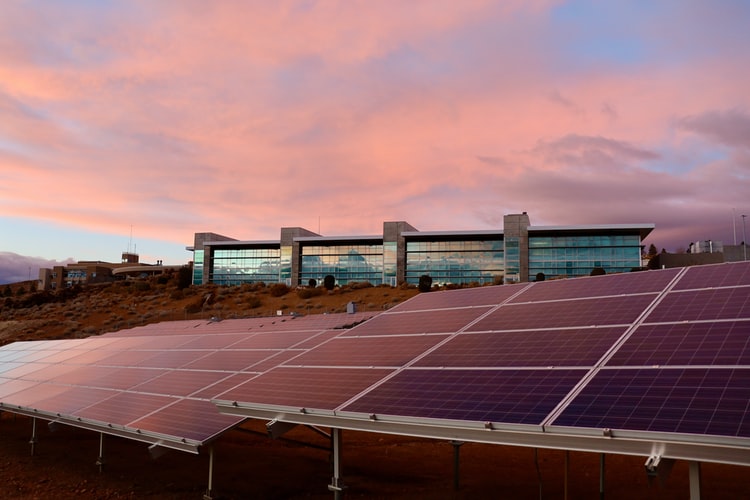Photovoltaics (PV) is the conversion of light into electricity using semiconducting materials that exhibit the photovoltaic effect, like a solar power plant, a series of glass panels that are usually attached on rooftops, creating sustainable, clean solar energy. The new inter-discipline of environmentally conscious architecture has been booming, in the corporate world, and on a personal scale, growing the need for aesthetically pleasing solar system options for the home. Already the architecture and photovoltaic solar inter-discipline has created interesting, beautiful, and functional systems, including:
-
Shade Canopies
Photovoltaic solar power shade canopies are a raised extension of the solar panels that provide shade to anybody below, while also themselves receiving direct sunshine, creating powerful PV solar energy. Functionally, this has been used for creating a shaded patio, seating area, or even general rest stops. By adding greenery and elegant seating under it, the PV solar system used as a shade canopy can act as an interesting eyepiece while also being doubly functional.
-
Rooftop Solar Systems
The most common form that PV solar systems for homes come in, rooftop arrangements are the most convenient as they ensure direct sunlight. However, the roof’s existing architecture needs to be heavily considered – from its current available space, weight capacity, and construction health, to ensure that they can structurally take the heavy PV solar system.
-
Backsheets
A backsheet is the deepest colour layer of the PV solar system. While most are white, with blue coloured solar cells, black backsheets are available as well. This tints the whole structure and creates a sleeker, darker solar system that may match the aesthetic of the building or brand identity. The best part is that changing the colour of the backsheet does not affect the production of PV solar energy!
-
Monocrystalline or Polycrystalline cells
Changing the appearance of solar cells can have an aesthetic impact on the whole PV solar system, although certain colour changes in the monocrystalline cells do result in a lower production of solar energy. The biggest difference is that monocrystalline cells appear matte, dark, and thus give a more subdued visual while polycrystalline cells look brighter, shinier, and give off a powerful and eye-catching glint.
-
Building Requirements
The biggest factor that affects the architecture of a PV solar system is the functional demand of the client. If the electrical demand is smaller and caters to a solar system for the home, then the aesthetic approach will be different as well. Conversely, if the PV solar energy demand is high, the bulkiness of the solar plant will affect the design approach. With the growing interest in photovoltaic solar, from a consumer and supplier view, new changes are being made every day to enhance the solar energy produced and to allow for greater customisation. HomeScape provides three such options to clients, two of which are shade canopies – the Atrium and the Aerial, while the Terra is the simplest design.
- The Atrium is a pergola that mounts solar panels in a wooden structure, creating a luxurious design that is perfect for providing necessary shade under which barbecues and parties can be hosted, or simple leisurely time can be spent admiring the unobstructed view.
- The Aerial is a canopy style solar system that uses iron to provide a sleeker and glossier look, making for a more modern aesthetic while providing the same level of functionality.
- The Terra is a low elevated iron-mounted solar panel structure that can be placed on the edge of a rooftop, making the most of limited space and allowing for easier cleaning.
Each of these HomeScape products makes productive use of limited space, provide high performance, and add aesthetic appeal to any area. To know more about HomeScape by Amplus Solar, click here.



